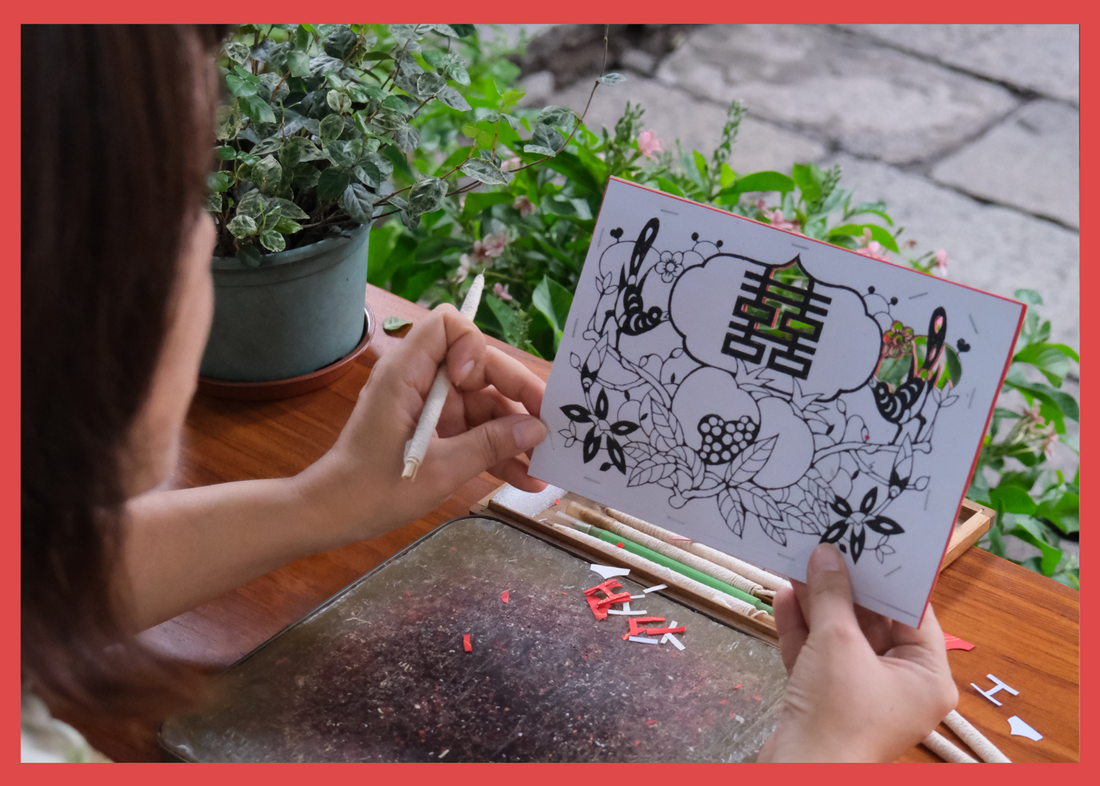
This Fascinating Ancient Artz
Share
When I think of ancient artz one word comes to mind: legacy. There’s something amazing about a tradition that has been around for thousands of years, passed down from generation to generation and still inspires today. For me Foshan paper cutting is one of those arts. It’s not just a craft it’s magic. This art makes you stop and look and when you do it talks to you in a way that feels timeless.
In my work I try to connect the past to the present. When I sit down to do paper cutting it’s not just about creating something beautiful it’s about telling a story. Every design every cut has a meaning that has been passed down for centuries. Whether it’s a fish, a lotus flower or a dragon each symbol has its own wisdom and through my art I get to share that with the world.
About Chinese Artistic Tradition
Chinese art is a beautiful mix of history, philosophy and beauty that has been around for thousands of years. Over time it has changed as society and ideas have changed but it has always stayed true to its roots. Whether it’s a painting, a paper cut or a piece of calligraphy every piece of art is a tribute to the long standing tradition of Chinese culture.
Chinese art loves both old and new. Each piece is a way of honouring the past but also adapting and growing with the times. It’s a tradition that’s alive and changing always incorporating new ideas while still respecting its roots.
History of Chinese Art
Chinese art has a long history shaped by the rise and fall of different dynasties. The earliest Chinese art we know of dates back over 10,000 years with pottery and simple sculptures. But over time art evolved. During the Shang and Zhou dynasties (16th-3rd centuries BC) the skill of bronze casting and jade carving developed and Chinese calligraphy was born an art that combines beauty and meaning.
The Han dynasty (206 BC–220 AD) is famous for its terracotta army incredible craftsmanship. The Tang dynasty (618-907 AD) was the golden age with stunning paintings, ceramics and poetry.
As Chinese art evolved each new dynasty added its own flair. From the detailed landscapes of the Song dynasty to the bright ceramics of the Ming dynasty each era brought new ideas and styles to the art world.
Foshan Paper Cutting: More Than Just Decorations

You might think paper cutting is just for holidays but it’s so much more than that. Like traditional painting paper cutting is full of history and meaning. In ancient China people used Jianzhi (the art of paper cutting) to invite good fortune, happiness and protection into their homes. These weren’t just pretty pictures they were powerful symbols each with its own meaning.
For example:
- Fish means prosperity.
- Lotus flower means purity and growth.
- Dragon means strength.
- Phoenix means rebirth.
When I cut these designs I don’t just think about the shapes. I think about what they mean. A lotus isn’t just a flower it’s about rising above and finding peace. A fish isn’t just swimming it’s chasing good fortune. Each cut I make feels like I’m sharing an ancient story that’s still relevant today.
Foshan Paper Cutting: Tradition and Magic
If you’ve seen Foshan paper cutting you know it’s something special. It’s detailed but also full of energy with designs that pop off the page. What makes Foshan stand out is that it stays true to its roots but still feels modern and alive. These designs have been around for centuries but still speak to us today.
When I work with Foshan paper cutting I’m not just copying old designs I’m bringing them into today’s world keeping the symbols alive. The dragons, phoenixes, lotus flowers and fish aren’t just ancient images they’re timeless. They mean strength, beauty and good fortune and will always be part of our lives.
Characteristics of Traditional Chinese Art
Traditional Chinese art has a few key characteristics. One of the biggest is the emphasis on nature. Chinese artists have always tried to capture the beauty of the natural world and use it to convey deeper meaning.
Brush, ink and paper are the main tools of Chinese art. The skill in using them is part of what makes the art so beautiful.
Balance and harmony is at the heart of Chinese art. Whether it’s the composition of a landscape painting or the design of a vase everything is carefully considered to feel whole and balanced. Artists use bold colours and intricate patterns to bring their work to life.
And finally Chinese art is about personal expression. Every piece shows the artist’s connection to the world and their emotions.
Why I love working with ancient symbols in Chinese history
The more I cut Foshan paper cutting the more I realize the power of symbols. Every design tells a story. A fish isn’t just a creature it’s a symbol of abundance and wealth. A lotus isn’t just a pretty flower it’s about overcoming and finding peace.
One of my favourite symbols to work with is the fish. In Chinese the word for fish sounds like the word for abundance. So when you see a fish in my designs it’s not just art it’s a wish for prosperity. When I cut a fish I’m imagining the good fortune it will bring.
Bring Ancient Arts into Your Home
I’d like to invite you to bring the magic of Foshan paper cutting into your home. When you hang one of my pieces you’re not just adding decoration you’re bringing in the energy of the lotus’s purity the fish’s fortune and the dragon’s strength.
Every piece has a story—an ancient legacy that’s still relevant today. When you look at a paper cutting you’re not just seeing a design you’re connecting with history culture and the meaning behind it all.
